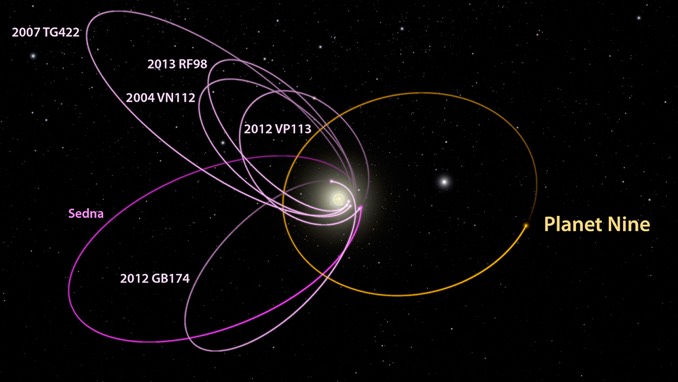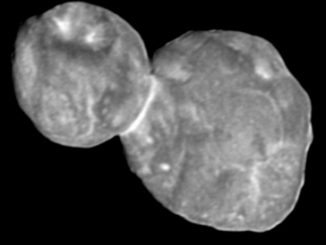
For the past several years, astronomers have been searching for an unseen planet beyond the orbit of Pluto, a presumed world with 10 times the mass of Earth that could be responsible for the seemingly clustered orbits of small Trans-Neptunian Objects, or TNOs, in the extreme outer solar system. So far, “Planet 9” has eluded detection.
Dealing a possible blow to the theorised planet, a team of researchers led by Kevin Napier of the University of Michigan suggests selection bias may have played a role in the original justification for Planet 9.
TNOs are so distant and dim they can only be detected, if seen at all, when their orbits carry them relatively close to the inner solar system. Napier’s team analysed 14 other extreme TNOs discovered in three surveys and concluded their detection was based on where they happened to be at the time and the ability of the telescopes in question to detect them.
In other words, the clustering seen in the orbits of the original TNOs cited in support of Planet 9 may have been the result of where the bodies happened to be when they were observed. TNOs may well be uniformly distributed across the outer solar system without any need for the gravitational influence of an unseen planet.
“It is important to note that our work does not explicitly rule out Planet X/Planet 9; its dynamical effects are not yet well enough defined to falsify its existence with current data,” the researchers write in a paper posted on ArXiv. “Instead, we have shown that given the current set of ETNOs (extreme TNOs) from well-characterised surveys, there is no evidence to rule out the null hypothesis.”
Mike Brown and Konstantin Batygin at the California Institute of Technology, the original proponents of Planet Nine, beg to differ.
“Can their analysis distinguish between a clustered and uniform distribution, and the answer appears to be no,” Batygin said in an update posted by the journal Science.
Brown took to Twitter on 16 February to voice his thoughts, showing diagrams of the TNOs that he says support the original case for Planet 9. And in a blog post, he provided a detailed rebuttal, concluding that “in the end, the previously measured clustering from our 2019 paper is still valid … and the conclusions of that paper remain.”
“The clustering of distant Kuiper belt objects is highly significant,” Brown writes. “It’s hard to imagine a process other than Planet Nine that could make these patterns. The search continues.”



